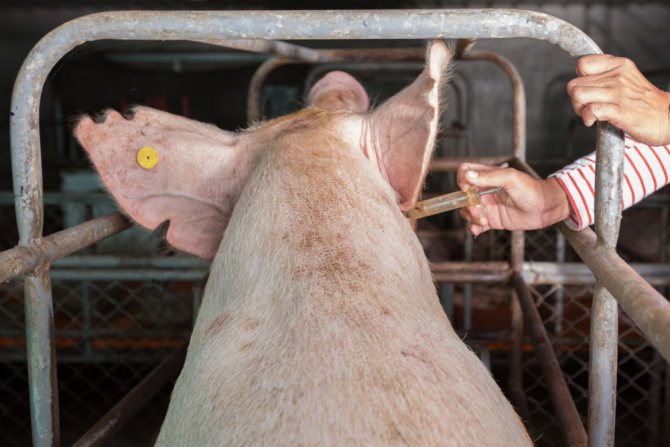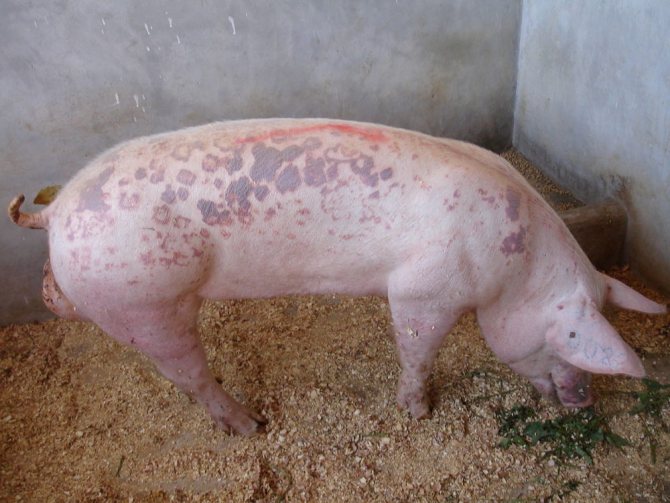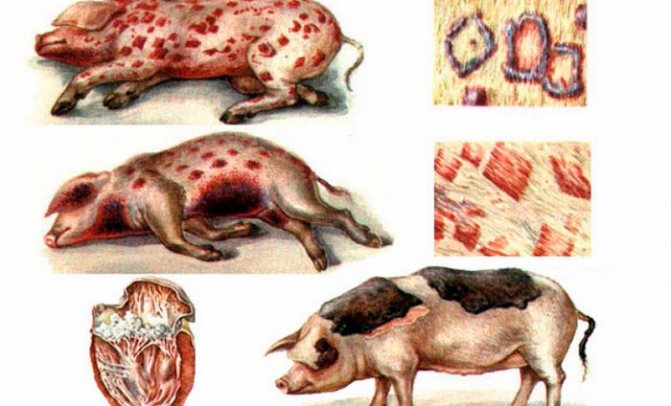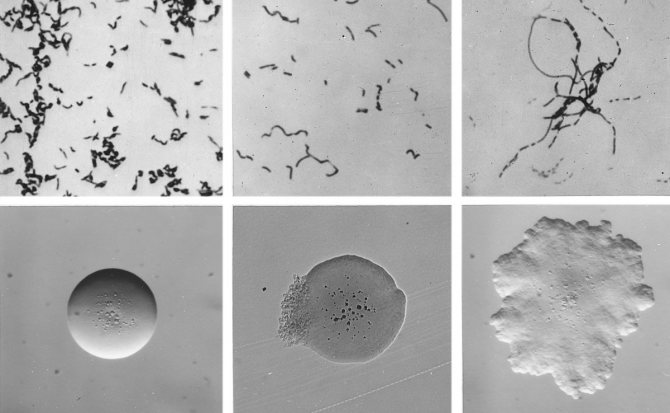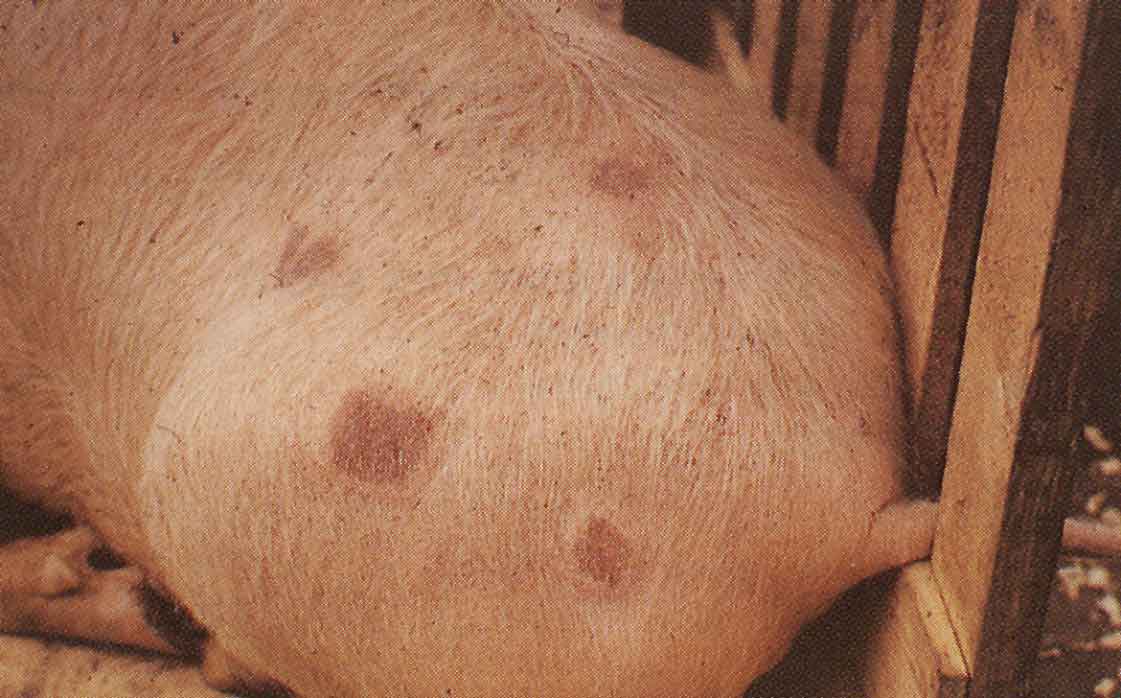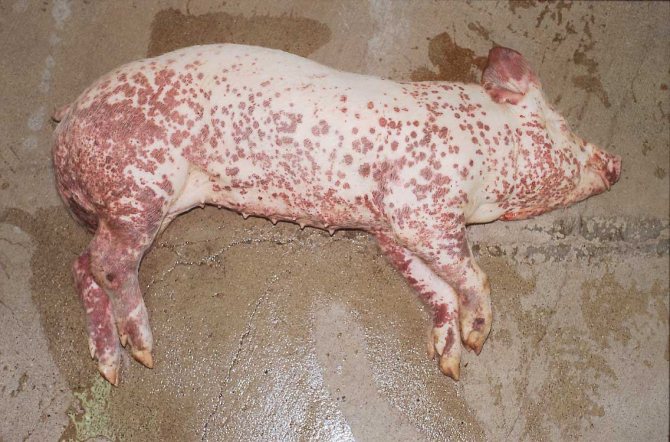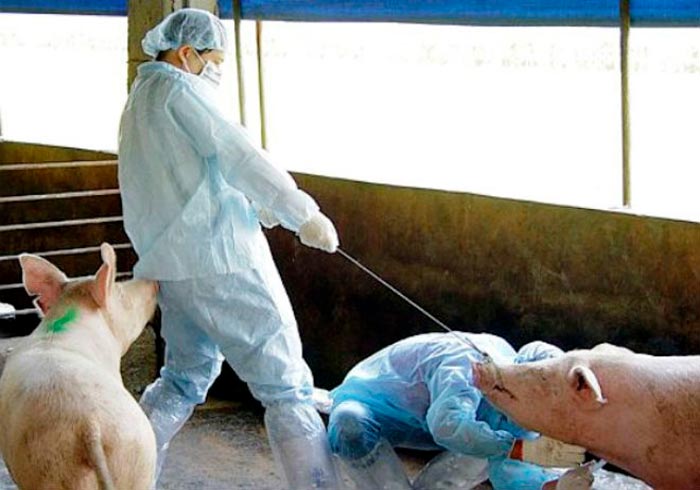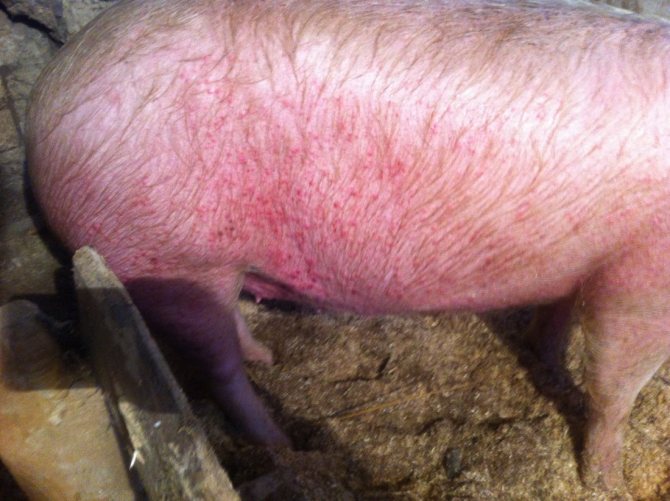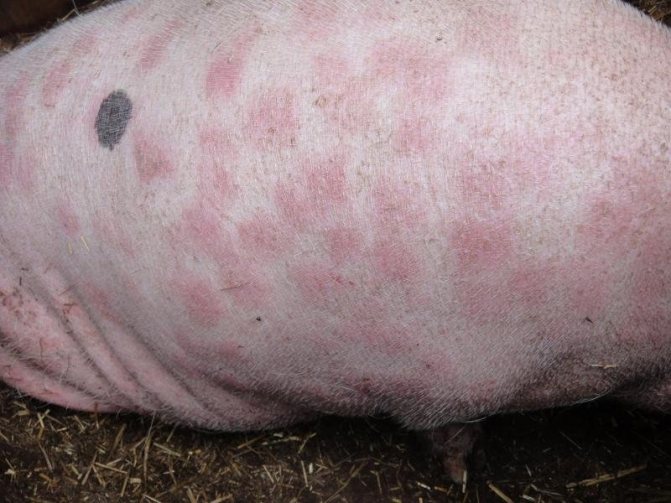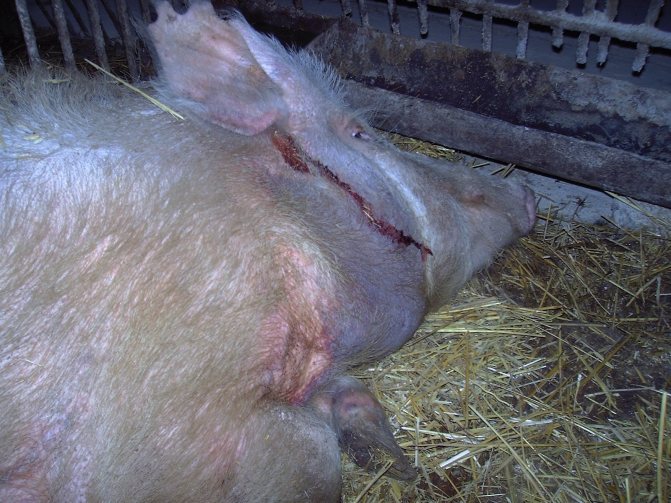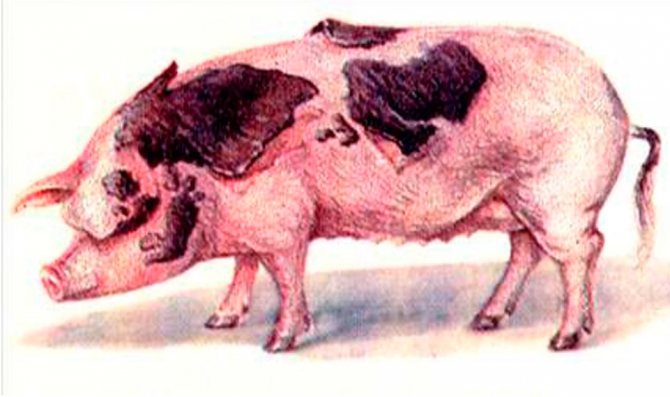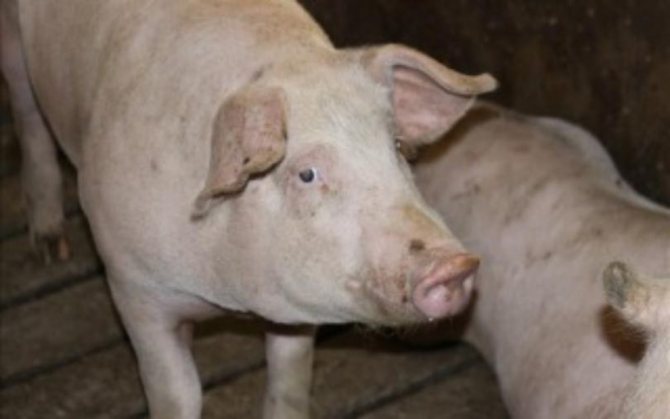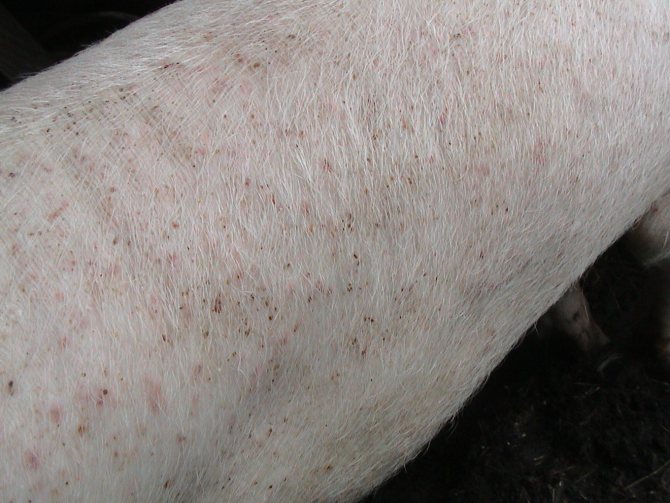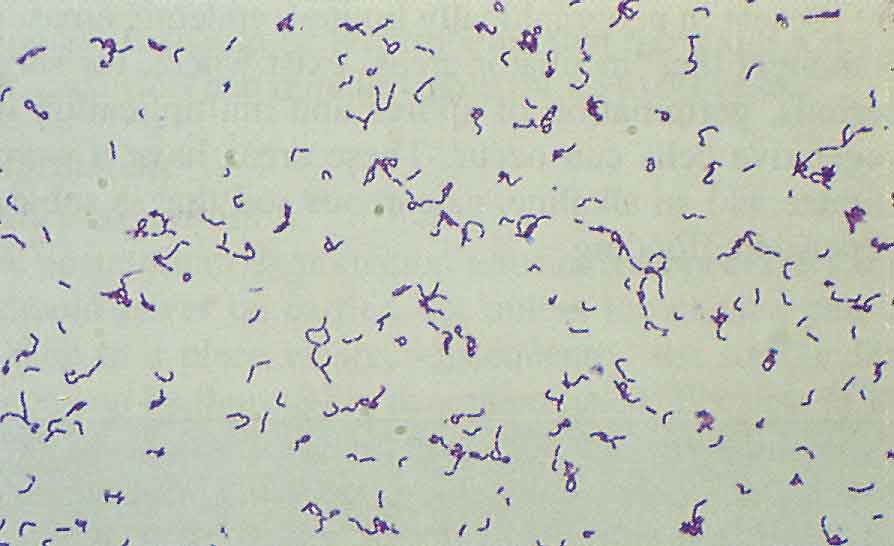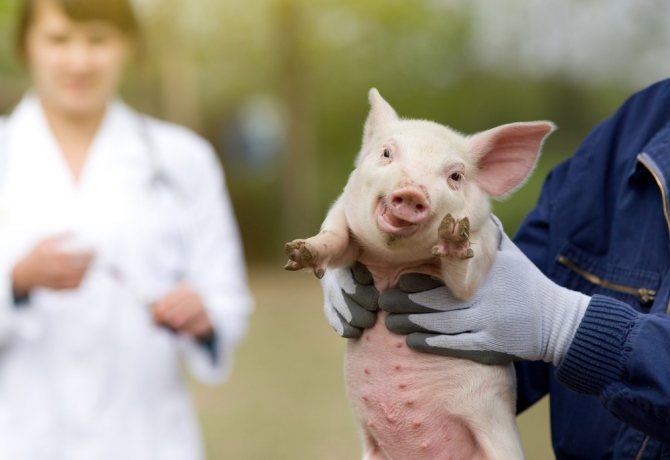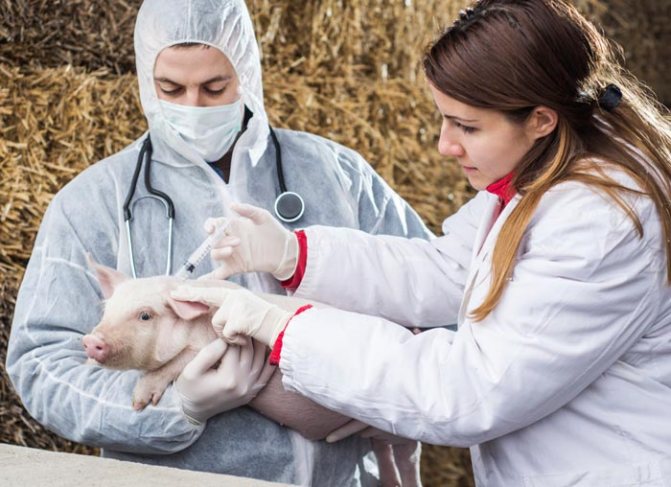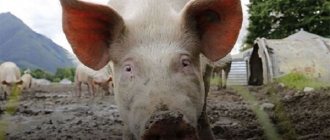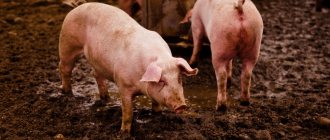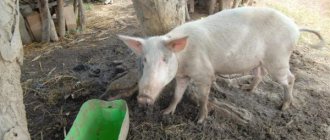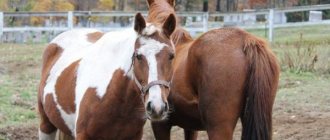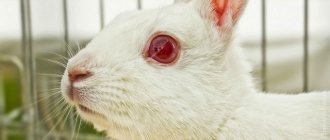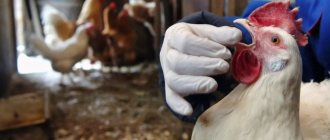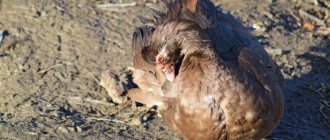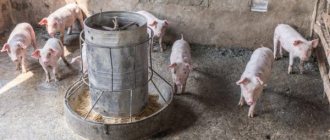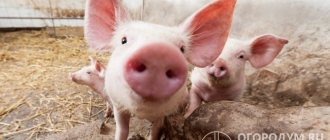History of the disease
According to scientists, erysipelas has a rich and long history dating back to ancient times. But then mass infections were perceived as a completely different infection (for example, anthrax), it was she who was most prevalent at that time. Leffer was the discoverer of the stick, who described it in 1885, however, some learned minds found and isolated a new bacillus in the corpse of a pig, and also produced a drug to protect animals from illness. And this was done a few years before Leffer.
You can meet an erysipelas in any corner of our planet. It exists both in our country and on European territory. The disease can cover a large area and cause great economic damage to pig farms. It affects pigs of different breeds: Yorkshire, Landrace and others.
What is the causative agent of the disease?
Finding the source of infection in natural conditions is not as difficult as you think. This can be infected soil or animal remains after slaughter. The immediate pathogen is a bacterium with an excellent ability to quickly adapt to a new habitat. The microorganism begins to germinate in any nutrient medium. It is worth noting that the stick remains motionless and does not form spores or capsules. It is resistant to external influences. The microbe can perfectly live for more than one month in soil, aquatic environment or manure. However, it is possible to cope with erysipelas of pigs with disinfectants and high temperatures.

The disease is characterized by seasonality, since with the onset of the warm season, bacteria appear on the surface of the earth layer. Sick animals act as carriers, contributing to the spread of microbes through feces and urine.
A disease can flare up, even if there was no infection from an external source. This is due to the fact that in the presence of stressful situations in the tonsils and intestines, a latent infection appears in pigs. The disease will spread depending on the level of resistance of the animals to it. On average, 30% of the total number of the herd can get sick.
Foci of manifestation
The causative agent of pig erysipelas is especially dangerous for young piglets. Microbes leave the body of infected individuals with feces and urine, enter the soil, where they are easily picked up by healthy animals. The virus is able to exist for a long time outside the body, remaining in manure, waste and cadaveric remains.
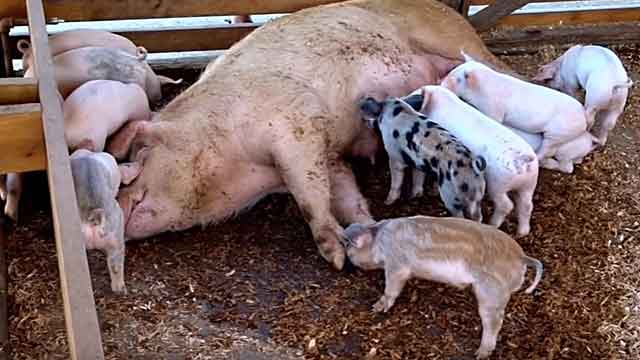

The source of the erysipelas virus in pigs can also be water, feed, equipment, rodents, birds and insects containing the virus.Anamnesis of research shows that animals get sick with this virus only in the warm season, while in winter, outbreaks of the epidemic were practically not recorded.
But, the danger remains in cold weather, since the erysipelas stick can be in the body of a healthy pig in a latent phase. She sleeps until the animal gets sick, gets stressed, or other factors that weaken the immune system appear.
In the case of a local outbreak, the disease occurs without an external pathogen, which leads to infection of erysipelas in more than a third of the herd. The mortality rate in such a situation can reach 80%.
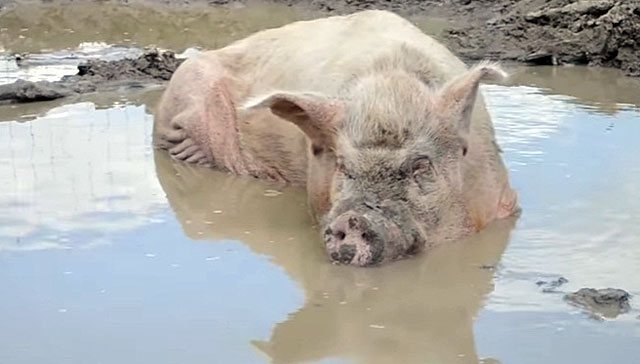

Erysipelas in pigs: symptoms
The disease is interesting in that not only one animal can be affected, but several individuals when kept in a group. The whole herd can get sick if the first signs of infection were detected in at least one pig.
The owner should perform daily skin examinations of his herd. At the end of the incubation period, first redness and then swelling may appear on the upper layers of the epidermis. The skin may appear as small watery bubbles.
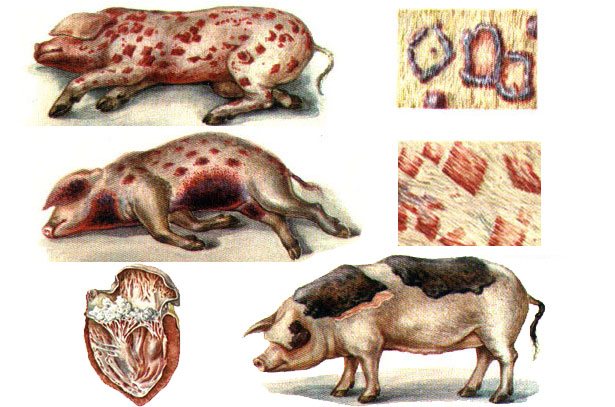

In a sick pig, you can observe symptoms similar to the inflammatory processes of the lymph nodes, which occur with lymphadenitis or lymphangitis. The inflammatory process is accompanied by an increase in temperature. With bouts of fever, it can rise to 39 degrees. Then comes the turn of painful symptoms in the area of the joints. By the behavior of the animal, you can understand that something is wrong with it.
Piglets lose physical activity, try to move less, worry, become nervous. The development of erysipelas is accompanied by a refusal to feed, and if the temperature rises, then the pigs begin to drink a lot. After 14 days, the animal loses weight, anemia may develop and shortness of breath may appear. With timely treatment, the symptoms disappear after 14 to 21 days. All therapeutic measures are performed as directed by a veterinarian.
Forecast
The prognosis of erysipelas in pigs depends on the form in which it proceeds.
The most favorable outcome can be expected with the subacute form of the disease, if the treatment was started in a timely manner.
Untimely started or poor-quality treatment of this infection leads to its transition to a chronic form of the course. If this happens, then systemic damage to the joints is observed, and this affects the ability of the animals to move.
Characteristic symptoms for different stages
The infection has 4 forms:
- lightning fast;
- sharp;
- subacute;
- chronic.
The first type of erysipelas is quite rare. Symptoms include a sharp rise in temperature, impaired cardiac activity. Such indicators lead to the death of the animal after 12 hours.
The second type is more common. In pigs, there is a refusal to feed, a disturbance in the work of the digestive system, characterized by constipation or vomiting. In case of disturbances in the work of the heart, pulmonary edema, cyanosis of the abdomen, cervical region, and sternum develop. Some animals are covered with pink spots. In case of untimely treatment, death within 4 days.
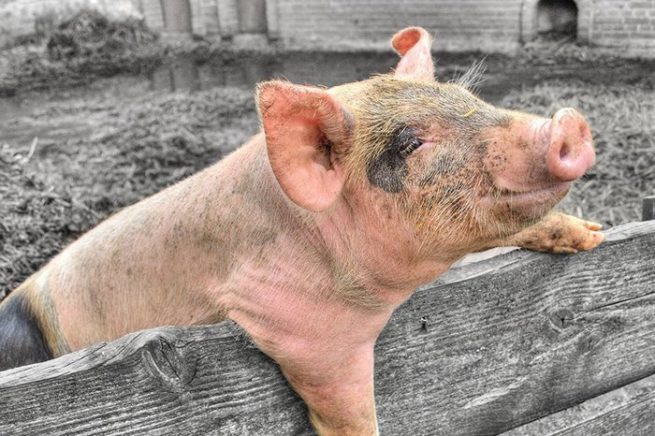

The third type is the most common. The symptoms are as follows:
- skin rashes similar to urticaria;
- the temperature rises;
- loss of appetite;
- the animal weakens;
- drinks often.
Spots can be in the form of squares or circles, show through in the head, trunk a day after infection. If you press on them, they become pale. The illness lasts up to 12 days; under the best circumstances, the pig recovers in 48 hours.
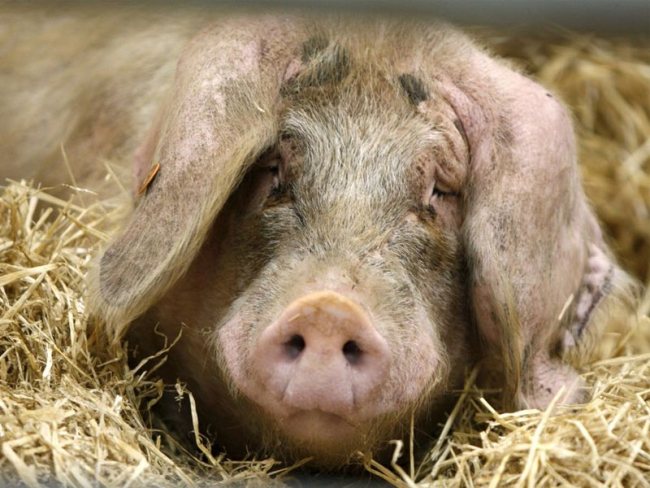

The fourth type is the result of a neglected disease. It is accompanied by necrosis, endocarditis, internal organs are affected. Most of the skin becomes red, dense, covered with a crust of necrotic origin.The disease can occur for more than one month with the rejection of tissue, which begins to rot. Individuals with a chronic form grow slowly, develop, and in most cases are sent for slaughter.
The spread of the disease and the favorable climate for the virus
The risk group for erysipelas is pigs from 3 months to a year. Newborn piglets are more resistant to the virus, since immunity is given to them with sow milk. On favorable farms, animals are less susceptible to the risk of infection than on those farms where sanitary and hygienic standards are neglected.
The erysipelas virus manifests itself under the influence of such factors as: an increase in air temperature, humidity, a decrease in ventilation or a sharp change in diet. When these aspects change, the disease "wakes up" and enters the body of animals. The routes of infection can be very different:
- unhealthy cattle meat;
- Food;
- manure;
- land;
- drink;
- inventory;
- insects.
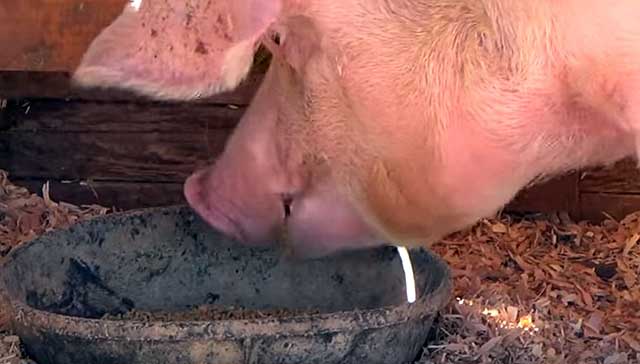

All this can become a carrier of erysipelas and many other viral infections. This is why it is recommended to take preventive measures in pig farms to reduce the risk of infection.
Erysipelas in pigs: treatment
As mentioned above, they could not find a remedy for erysipelas for quite a long time. Scientists proposed a method of vaccination, which served as a preventive measure against the disease, but there was no proper level of safety, as well as the answer to the question of how to defeat the disease. The annual losses in pig farms were truly enormous, animals were sent under the knife only because there was no way to cure them. Huge amounts of money were spent on disinfection measures, not counting losses from the loss of livestock.
Today, everything does not look so scary, the main thing is that the disease is identified at an early stage. Modern veterinarians have developed a serum, which is used together with penicillin in large quantities for erysipelas.
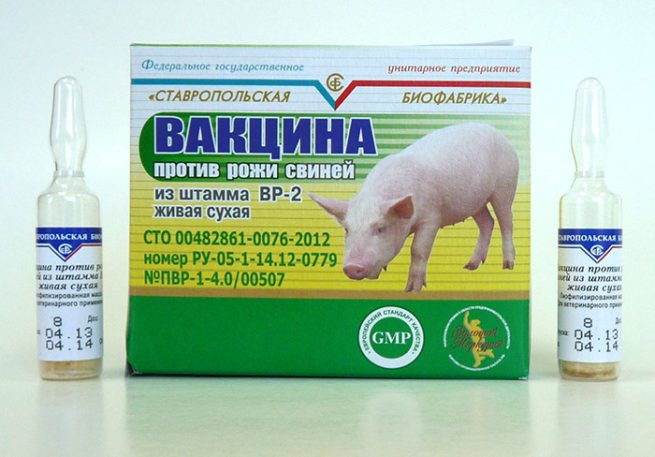

Antibiotic Bitsilin-5 20 thousand units per kilogram of weight is mixed with anti-erysipelas serum and used as follows:
- suckling pigs - 5-10 ml;
- pigs up to 50 kg - 30-50 ml;
- pigs over 50 kg - 50-75 ml.
The solution is injected with a sterile syringe intramuscularly behind the ear of the animal twice a day.


Prophylaxis
To prevent the disease of erysipelas, it is necessary to observe the technology of pork production - to feed and keep the animals in accordance with the recommended norms, to prevent the occurrence of stressful situations during all kinds of movements. In this case, the pigs will have strong immunity that can protect against the disease, even in the presence of the pathogen.


Vaccination schedule
Since piglets over 3 months of age are susceptible to erysipelas, the immune system is given a month to develop sufficient antibodies. However, at this time, the defense mechanisms are not fully functioning, therefore, after 25-30 days, revaccination is carried out. The antibodies produced are enough for six months. After 150 days, the pigs are again vaccinated against erysipelas. In all cases, 1 ml is pierced behind the ear or into the muscles of the inner thigh, which corresponds to one dose.
If the pigs are 4 months old, but they have not yet been vaccinated, they are vaccinated, which is fixed after 150 days. The pig's immune system is already formed by day 120.
The first coating of a pig is carried out at 8-9 months, if its weight exceeds 100 kg. At this age, the future sow is still susceptible to erysipelas, so she needs to be vaccinated.
In order for a reliable immunity to develop after vaccination, the following conditions must be met:
- The biological product must not be expired.
- Store and transport the vaccine at 4–10 ° C.
- Use an individual needle for each individual.
- If the pig was treated with serum, it should not be vaccinated earlier than 14 days after the course of therapy.
- Antibiotics should not be used a week before and 7 days after vaccination.
- The biological product is not a medicine, therefore, it cannot be pierced by a sick animal.
If, after vaccination, a depressed state is found in pigs, a decrease in appetite, an increase in temperature not exceeding 40.5 ° C, they are monitored. Such symptoms are considered a normal reaction to the vaccine if they resolve within 1–2 days. If an infected pig is vaccinated during the incubation period, a disease can occur in which the animal must be isolated and treated.
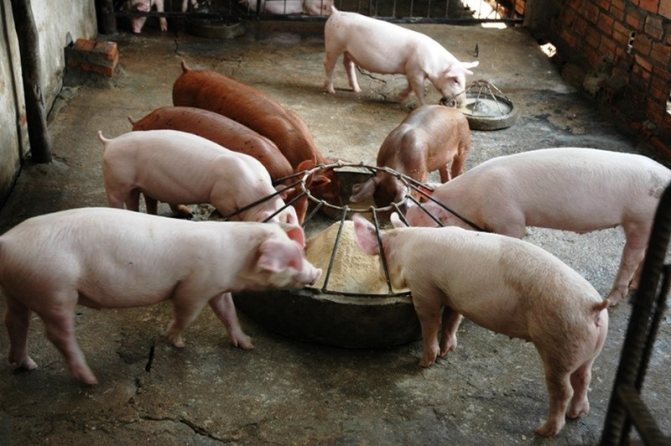

And at home, you can provide a comfortable keeping of pigs
Preventive measures
The most common prevention method is regular vaccination to maintain immunity. It is best to use the BP2 strain, which helps against both classic plague and erysipelas, which makes the vaccine truly invaluable.
The first vaccination is carried out from the 40th day of the piglet's life, then the repeated vaccination - after 2 weeks. All livestock are necessarily immunized, not only in large farms, but also in private farmsteads. With strict adherence to all deadlines, it is possible to prevent infectious outbreaks that will affect the entire district.
Preventive measures against erysipelas contribute to the fact that a number of diseases are reduced significantly. The stick is not resistant to disinfectants. It can be easily destroyed with freshly slaked lime, bleach, creolin, soda and other chemicals.
When detecting erysipelas, you need:
- Immediately ban the import and export of animals from the farm.
- Isolate sick livestock. Take thermometry of each individual to prevent the spread of infection. Vaccinate apparently healthy pigs and observe possible changes in the condition of the animals.
- If sick animals had access to certain premises, it is necessary to carry out disinfection treatments where they could visit.
The ban on the transportation of animals, as well as products, is removed by the veterinarian after the last animal recovers and a couple of 2-4 weeks have passed. The number of dead livestock is recorded and supervision over vaccination of healthy pigs is established. They check how well the disinfection of the premises, equipment, walking areas is carried out.
Vaccination Precautions for Animals
The vaccine against swine erysipelas is prepared on the basis of the BP-2 strain. Outwardly, it is a finely porous mass, which has a whitish-yellow color and dissolves without residue in saline solution. If the farm is unfavorable for this disease, then sick individuals are isolated and vaccinated with BP. This is done together with antibacterial drugs, as the instructions say. Work with BP should only be done with special gloves. For prevention, serum is introduced in the spring, and piglets are vaccinated throughout the year as they grow, from 3 months.
You cannot enter BP if the animal suffers from parasitic diseases, is severely emaciated, weakened, or has other infectious diseases.
In this case, you should use folk remedies. If, when handling animals, the BP vaccine gets on the skin or mucous membranes of a person, then it should be washed off under running water, washed hands with laundry soap, and then treated with a disinfectant solution. This is especially important to observe if there are any scratches or even minor abrasions and cuts on the hands. Meat and other products, if vaccinated animals are slaughtered, can be sold without any restrictions. However, only one rule should be observed: slaughter should be carried out no earlier than 7 days after the introduction of BP. Otherwise, the meat cannot be used for food.
If BP remains in the vial or the packaging on the vials is not airtight, there are no appropriate labels, there are some impurities, then they can be disinfected only by boiling for at least 15 minutes.
Related article: Grape variety - pink Timur


Pork can be sold one week after the animal is vaccinated
How meat products are used
Animals can be sold for meat only after the quarantine is lifted. You can eat meat products from sick, erysipelas and suspected pigs for ailment after thorough cooking and passing a test for the presence of Salmonella.
Meat products are edible with erysipelas only after the drugs are removed from the body of the diseased individual.
Due to the fact that erysipelas is transmitted to people, hygiene rules must be observed during slaughter and butchering of carcasses. Damaged skin increases the likelihood of infection. Meat products from dysfunctional animals must undergo compulsory heat treatment. All these methods allow you to prevent infection with a dangerous disease.
Folk ways
In addition to drug treatment, alternative methods can be used. The most effective way is considered to be applications and lotions on the affected areas from vinegar. Even after the end of the medication course, it is necessary to disinfect the skin of the animal and the pigsty in general for 10-14 days. Only after that, the sick individual can be transferred to the rest of the pigs. To obtain a solution, you need to dilute a bottle of vinegar in a bucket of clean water. Then the tissue is moistened in it and the sick animal is completely wrapped.


